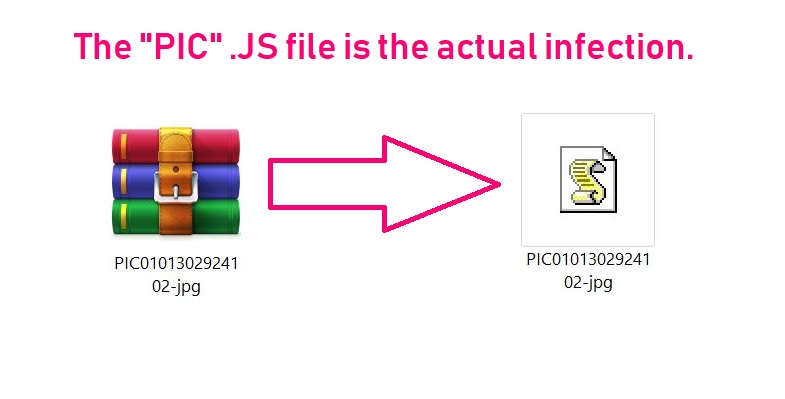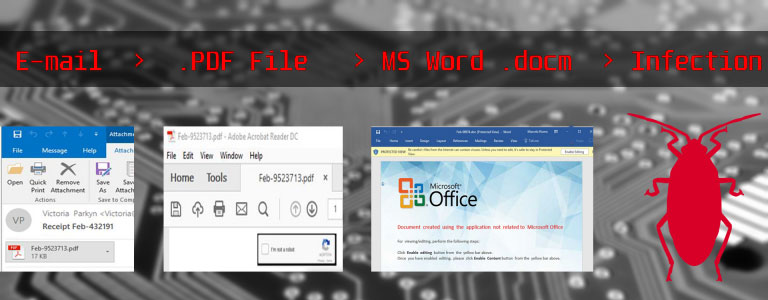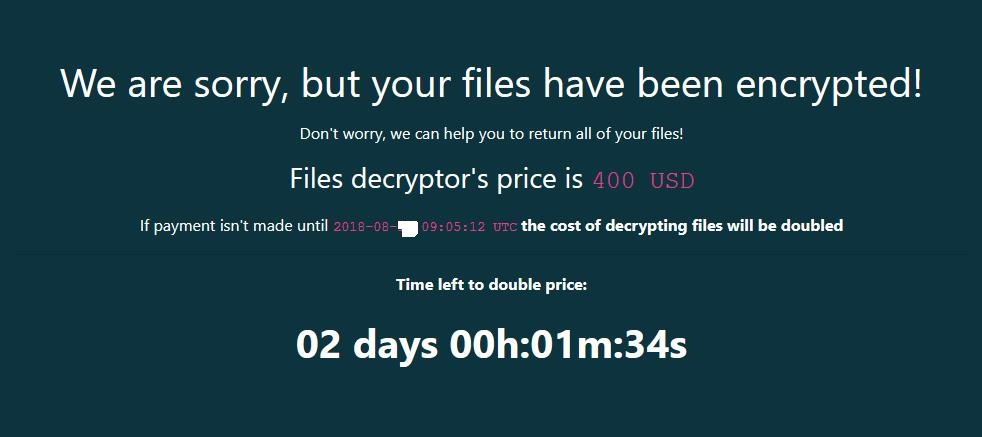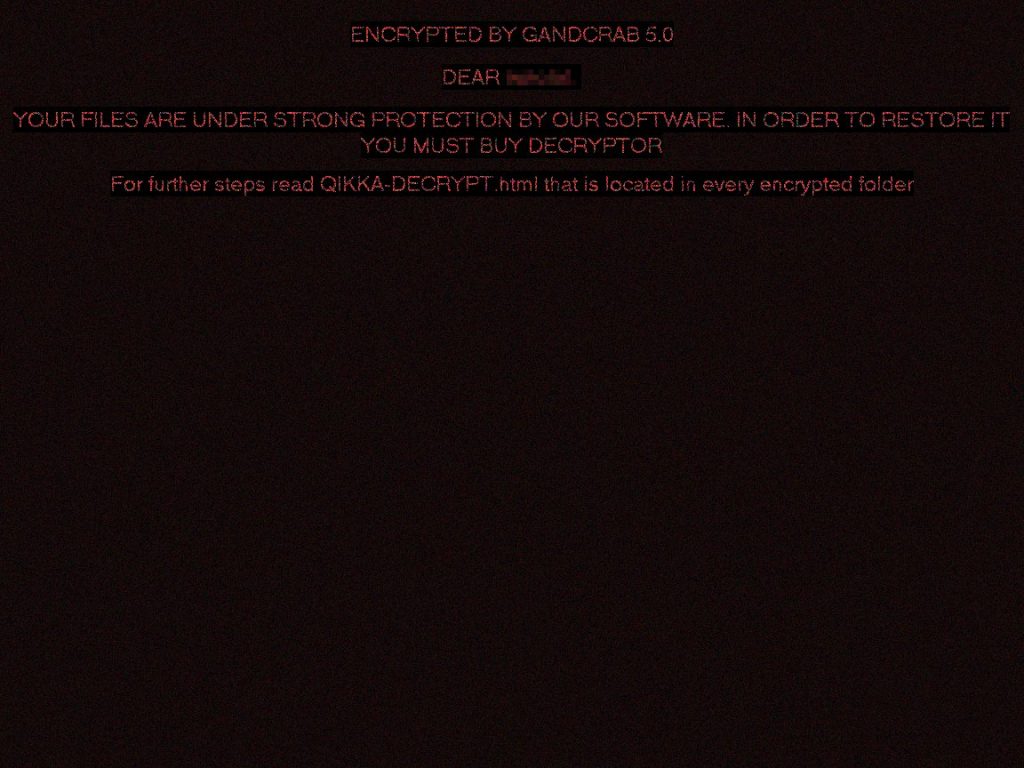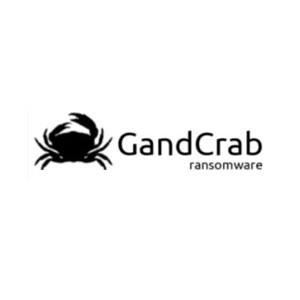 This article is made in order to best explain what is the GandCrab Ransomware infection, what are it’s versions and how to make sure and remove this ransomware virus effectively from your computer.
This article is made in order to best explain what is the GandCrab Ransomware infection, what are it’s versions and how to make sure and remove this ransomware virus effectively from your computer.
GandCrab ransomware is a cryptovirus for Windows machines, which aims to encrypt the files on the computers that are infected by it and then demands a ransom to be paid either in the cryptocurrency DASH or the BitCoin currency. The ransomware has been active since January 2018 and It has changed it’s versions a lot since it first started infecting computers, using new encryption algorithms, like Salsa20 and TEA(Tiny Encryption Algorithm). GandCrab ransomware has reached the point where security experts call it “The New King of Ransomware”, since the virus has been infecting users on a global scale. If your computer has been infected by GandCrab ransomware or you want to learn more about it and how you can tackle this virus, we suggest that you read this article. It contains all information available on the GandCrab ransomware and we keep it updated, since the virus is also constantly updated too.

Threat Summary
| Name | GandCrab |
| Type | Ransomware |
| Short Description | GandCrab ransomware encrypts your files and you cannot open them, unless you pay a lot of cryptocurrency money to the cyber-criminals. The ransom is paid in Dash or BitCoin currencies. |
| Symptoms | GandCrab ransomware renders the files on your computer unopenable and changes the wallaper to it’s version name. Sets an extension based on it’s variant. |
| Distribution Method | Spam Emails, Email Attachments, Executable files, .JS Files, Malicious Macros |
| Detection Tool |
See If Your System Has Been Affected by malware
Download
Malware Removal Tool
|
User Experience | Join Our Forum to Discuss GandCrab. |
| Data Recovery Tool | Windows Data Recovery by Stellar Phoenix Notice! This product scans your drive sectors to recover lost files and it may not recover 100% of the encrypted files, but only few of them, depending on the situation and whether or not you have reformatted your drive. |

GandCrab Ransomware – Update February 2019

GandCrab Ransomware – How Does It Infect
For the GandCrab ransomware to be spread, the virus uses different forms of replication and infection methods. Below, we have summarised each method and we show you more about them.
Method 1: Via e-mail.
This is the most commonly used method to infect a computer with GandCrab ransomware. The virus’s infection file may be of various [wplinkpreview url=”https://sensorstechforum.com/file-types-used-malware-2019/”]file types and these file types may be uploaded in e-mails where they may pretend to be legitimate documents. Below you can see an example of such case, taking advantage of a .JS (JavaScript) file that pretends to be an image:
2019/01.28 10:40
Giovanni Price Giovanni33@4311.com
Attachment: PIC0101302924102-jpg.zip (69 KB)
E-mail Body: ;)
When the user opens the e-mail, he or she will see the file contained in an archive. When this infection file is extracted and ran, it causes the infection with GandCrab ransomware:
Another method used by GandCrab is to make it as if the JavaScript file is an actual document and this file may be contained in a .7z archive that automatically extracts and executes the virus when you open it – clever indeed.
But .JS files are not the only way of spreading GandCrab ransomware, since the malware authors have also used malicious Microsoft Office documents as well as Adobe .PDF files to infect victims. The way they use them is by disguising the actual document’s malicious nature with obuscators and infecting it with malicious Macros. These macros are basically a code that is triggered each time when you click on “Enable Content” or “Enable Editing” in a document and once this is done, infection with GandCrab is inevitable. Below, you can see how such an attack can occur over e-mail:
Method 2: Via Malicious Files Uploaded on Sites
This method is also very commonly used and we have seen GandCrab developers to use it before. As Fortinet researchers have already reported, they have detected multiple compromised WordPress websites that contained GandCrab ransoware’s infection file directly uploaded on websites that offer software cracks for the following programs:
- Crack SysTools PST Merge 3.3
- Crack Securitask 2005 1.40H
- Crack Merging Image to PDF 2.8.0.4
- Crack for Windows Password Key Enterprise 9.6.2.
Thanks to Fortinet researchers, you can see some of the screenshots of these virus sites below:
Besides cracks, other infection files may also be uploaded with new versions that are likely to appear in the future too, like fake setups, portable versions of programs, freeware app installers and many other seeming legitimate programs, that turn out to be malicious.

GandCrab Ransomware – Background and Activity
GandCrab ransomware is a very persistent threat, which has evolved with many new versions over the years. To summarise these versions, we will pay attention to the most significant changes for each version. This will better help you understand what kind of virus you are dealing with.
GandCrab Ransomware – Variants
The first version which we can call GandCrab appeared back in January, 2018. Security experts at Comodo have established that the virus encrypted victims’ files and generated a unique decryption key. The GandCrab v1 was the first ransomware to ever use DASH in a cyber-extortion scheme. The GandCrab ransomware v1 used to copy it’s malicious files in the %AppData%\Microsoft directory and then inject malicious code in the a system process, called nslookup.exe. The virus used to communicate to pv4bot.whatismyipaddress.com in order to see what is the IP on the infected PC and then run the nslookup service to connect to gandcrab.bit.a.dnspod.com, using the .bit domain. The version spread rapidly, but it did not last long. Researchers were able to devise a decryptor for the virus and shortly after that, the crooks stopped spreading the infection files.
This variant quickly came out a week after the researchers were able to decrypt the first version. It used the .CRAB extension which it added to the files, that the virus encrypted by using a brand new encryption algorithm. To spread it, researchers used spam e-mails and after an infection was done, the domains for communications used were hardcoded to ransomware.bit and zonealarm.bit.
The cyber-criminals behind GandCrab did not stop evolving and in April they have started infection campaigns featuring new version of the virus, a v3. The GandCrab v3 iteration aimed to make sure that the victims know it’s there by changing the desktop wallpaper on the compromised computers to it’s ransom note. The virus also aimed to introduce fear in victims by having scripts that were added in the RunOnce key:
→HKLM\SOFTWARE\Microsoft\Windows\CurrentVersion\RunOnce\whtsxydcvmtC:\Documents and Settings\Administrator\Application Data\Microsoft\yrtbsc.exe
These scrips aimed to switch between the wallpaper and the ransom note text file of the virus automatically in order to pressure victims into paying the ransom.
The 4th version of GandCrab ransomware was made to perform quite the activities and besides the new .KRAB extension used by it, it also added a lot of new updates and changes to it. As researchers at Comodo have found out, GandCrab v4 used the Tiny Encryption Algorithm, also known in the trade as TEA in order to avoid being detected by the cyber-criminals. The name of this cypher suggests that it is used to be very fast in encrypting files affter infection.
Besides a newly-made wallpaper, the crooks, behind GandCrab ransomware now have started using new methods to spread the virus – software cracks. As we mentioned in the “distribution” section above, the crooks uploaded cracks and once the victims downloaded and ran them, the ransomware is dropped on the PC. One malicious file was detected to pose as Crack_Merging_Image_to_PDF.exe. The virus also had added new features, like the ability to create a custom URL for it’s Tor payment page based on the unique ID of the infected computer. The virus also used to relay data from the infected machine to it’s Command and Control server and this data is also XOR encrypted for a secure communication. Not only this, but researchers believe that the virus was likely made in Russia, since it used a very specific key string, called “jopochlen”, which is a combination of two russian words.
The ransom note of GandCrab ransomware i was called KRAB-DECRYPT.txt and the virus checks for multiple Windows files and system folders which it skips encrypting If they are created in the victim machine, like it’s ransom note. GandCrab v4 did not change the file names of the encrypted files. This was the first time, where the payment page of GandCrab started appearing with an updated and new design:
Other interesting changes of the virus were that it started targeting users of older Windows OS’s, like Windows XP as well:
The 5th version of GandCrab is the most significant one and is still being used today. The ransomware virus has updated it’s wallpaper and in all of it’s v5 variants it uses random file extensions with scrambled letters. This is the most significantly changed version of the virus, since it ditched the previous encryption algorithms used by it and added the Salsa20 encryption mode. Not only this, but the cyber-criminals have also managed to find out that the ransom page of the virus was also changed to the following:
The main text file with the ransom note was also changed and is currently looking like the following:
—= GANDCRAB V5 =—
UNDER NO CIRCUMSTANCES DO NOT DELETE THIS FILE, UNTIL ALL YOUR DATA IS RECOVERED
FAILING TO DO SO WIL RESULT IN YOUR SYSTEM CORRUPTION, IF THERE ARE DECRYPTION ERRORSAttention!
All your files, documents, photos, databases and other important files are encrypted and have the extension:
The only method of recovering files is to purchase an unique private key. Only we can give you this key and only and only we can recover your files.
The server with your key is in a closed network TOR. You can get there by the following ways:
—————————————————————————————–
| 0. Download Tor browser – https://www.torproject.org/
| 1. Install Tor Browser
| 2. Open Tor Browser
| 3. Open link in TOR browser https://gandcrabmfe6mnef.onion/ b6314679c4ba3647/
| 4. Follow the instructions on this page—————————————————————————————–
On our page you will see instructions on payment and get the opportunity to decrypt 1 file for free.
ATTENTION!
IN ORDER TO PREVENT DATA DAMAGE:
* DO NOT MODIFY ENCRYPTED FILES
* DO NOT CHANGE DATA BELOW
The wallpaper of the 5.0 versions was also changed having the version, the ransom note and the extensions added to it in a red screen:
The main ransom note in the wallpaper of the virus started looking like the following:
ENCRYPTED BY GANDCRAB 5.0
DEAR
YOUR FILES ARE UNDER STRONG PROTECTION BY OUR SOFTWARE IN ORDER TO RESTORE IT YOU MUST BUY DECRYPTIOR
For further steps read [extension letters].DECRYPT.html that is located in every encrypted folder.

GandCrab Ransomware – Encryption Process
The encryption of GandCrab ransomware has changed quite a bit over the years, and a lot of it’s versions have so far been decrypted:
However, the newer v5 variants of the virus are still undetectable and researchers are still trying to make progress towards decoding files.
The encryption routing of this virus begins with the Salsa20 encryption mode which is strong and fast and is made in such way to avoid detection. The virus aims to encrypt absolutely all usable file types in Windows, besides the ones on it’s White list. Before starting the actual encryption, GandCrab ransomware checks your computer for the following data:
- Username.
- Name of the computer.
- Group the computer belongs to.
- If an antivirus is installed.
- It’s language.
- It’s keyboard languages.
- Operating system information.
- Hard Drive Information.
- IP address.
The virus then relays the gathered information to it’s command and control server via encrypted communication modes. Then, the ransomware proceeds to encrypt all of the files on the victimized PC, where it excludes the following files and folders:
→ Files:
It’s ransom note {Extension}-DECRYPT.txt
Desktop.ini
Autorun.inf
Ntuser.dat
Iconcahce.db
Bootsect.bak
Boot.ini
Ntuser.dat.log
Thumbs.db
Ntl dr
NTDETECT.COM
Bootfont.bin
Folders:
\ProgramData\
\IETldcache\
\Boot\
\Program Files\
\Tor Browser\
\All Users\
\Local Settings\
\Windows\
After encryption has been completed, depending on the version it is in, GandCrab ransomware may self-delete it’s files.

Remove GandCrab Ransomware and Try to Restore Encrypted Files
We have always believed that GandCrab and Cerber ransomware were made by the same people, which means that this virus is a very advanced and persistent threat, that will likely keep terroizing computers either via this name or another one.
Either way, to remove GandCrab ransomware, you are welcome to use the manual removal methods (first two removal steps) below in combination with the information we have added in this article or you can remove GandCrab ransomware automatically by scanning your computer with an advanced anti-malware program, which is what most security experts would advise doing.
If you want to try and restore files, you may have figured out by now that the encryption used by GandCrab is quite difficult to break if your variant is not among the decryptable ones. In this case we would advise that you try using the alternative file recovery methods we have provided below in the “try to restore” step. They may not be a 100% guarantee solution for file recovery, but with their aid, you might be able to get at least some files back to normal. Last but not least, we would strongly recommend that you do a backup of GandCrab’s ransom note and encrypted files as well, because such viruses are dangerous and may break your files beyond decryption if you try to tamper with them directly.
- Step 1
- Step 2
- Step 3
- Step 4
- Step 5
Step 1: Scan for GandCrab with SpyHunter Anti-Malware Tool



Ransomware Automatic Removal - Video Guide
Step 2: Uninstall GandCrab and related malware from Windows
Here is a method in few easy steps that should be able to uninstall most programs. No matter if you are using Windows 10, 8, 7, Vista or XP, those steps will get the job done. Dragging the program or its folder to the recycle bin can be a very bad decision. If you do that, bits and pieces of the program are left behind, and that can lead to unstable work of your PC, errors with the file type associations and other unpleasant activities. The proper way to get a program off your computer is to Uninstall it. To do that:


 Follow the instructions above and you will successfully delete most unwanted and malicious programs.
Follow the instructions above and you will successfully delete most unwanted and malicious programs.
Step 3: Clean any registries, created by GandCrab on your computer.
The usually targeted registries of Windows machines are the following:
- HKEY_LOCAL_MACHINE\Software\Microsoft\Windows\CurrentVersion\Run
- HKEY_CURRENT_USER\Software\Microsoft\Windows\CurrentVersion\Run
- HKEY_LOCAL_MACHINE\Software\Microsoft\Windows\CurrentVersion\RunOnce
- HKEY_CURRENT_USER\Software\Microsoft\Windows\CurrentVersion\RunOnce
You can access them by opening the Windows registry editor and deleting any values, created by GandCrab there. This can happen by following the steps underneath:


 Tip: To find a virus-created value, you can right-click on it and click "Modify" to see which file it is set to run. If this is the virus file location, remove the value.
Tip: To find a virus-created value, you can right-click on it and click "Modify" to see which file it is set to run. If this is the virus file location, remove the value.
Before starting "Step 4", please boot back into Normal mode, in case you are currently in Safe Mode.
This will enable you to install and use SpyHunter 5 successfully.
Step 4: Boot Your PC In Safe Mode to isolate and remove GandCrab





Step 5: Try to Restore Files Encrypted by GandCrab.
Method 1: Use STOP Decrypter by Emsisoft.
Not all variants of this ransomware can be decrypted for free, but we have added the decryptor used by researchers that is often updated with the variants which become eventually decrypted. You can try and decrypt your files using the instructions below, but if they do not work, then unfortunately your variant of the ransomware virus is not decryptable.
Follow the instructions below to use the Emsisoft decrypter and decrypt your files for free. You can download the Emsisoft decryption tool linked here and then follow the steps provided below:
1 Right-click on the decrypter and click on Run as Administrator as shown below:

2. Agree with the license terms:

3. Click on "Add Folder" and then add the folders where you want files decrypted as shown underneath:

4. Click on "Decrypt" and wait for your files to be decoded.

Note: Credit for the decryptor goes to Emsisoft researchers who have made the breakthrough with this virus.
Method 2: Use data recovery software
Ransomware infections and GandCrab aim to encrypt your files using an encryption algorithm which may be very difficult to decrypt. This is why we have suggested a data recovery method that may help you go around direct decryption and try to restore your files. Bear in mind that this method may not be 100% effective but may also help you a little or a lot in different situations.
Simply click on the link and on the website menus on the top, choose Data Recovery - Data Recovery Wizard for Windows or Mac (depending on your OS), and then download and run the tool.
GandCrab-FAQ
What is GandCrab Ransomware?
GandCrab is a ransomware infection - the malicious software that enters your computer silently and blocks either access to the computer itself or encrypt your files.
Many ransomware viruses use sophisticated encryption algorithms to make your files inaccessible. The goal of ransomware infections is to demand that you pay a ransom payment to get access to your files back.
What Does GandCrab Ransomware Do?
Ransomware in general is a malicious software that is designed to block access to your computer or files until a ransom is paid.
Ransomware viruses can also damage your system, corrupt data and delete files, resulting in the permanent loss of important files.
How Does GandCrab Infect?
Via several ways.GandCrab Ransomware infects computers by being sent via phishing emails, containing virus attachment. This attachment is usually masked as an important document, like an invoice, bank document or even a plane ticket and it looks very convincing to users.
Another way you may become a victim of GandCrab is if you download a fake installer, crack or patch from a low reputation website or if you click on a virus link. Many users report getting a ransomware infection by downloading torrents.
How to Open .GandCrab files?
You can't without a decryptor. At this point, the .GandCrab files are encrypted. You can only open them once they are decrypted using a specific decryption key for the particular algorithm.
What to Do If a Decryptor Does Not Work?
Do not panic, and backup the files. If a decryptor did not decrypt your .GandCrab files successfully, then do not despair, because this virus is still new.
Can I Restore ".GandCrab" Files?
Yes, sometimes files can be restored. We have suggested several file recovery methods that could work if you want to restore .GandCrab files.
These methods are in no way 100% guaranteed that you will be able to get your files back. But if you have a backup, your chances of success are much greater.
How To Get Rid of GandCrab Virus?
The safest way and the most efficient one for the removal of this ransomware infection is the use a professional anti-malware program.
It will scan for and locate GandCrab ransomware and then remove it without causing any additional harm to your important .GandCrab files.
Can I Report Ransomware to Authorities?
In case your computer got infected with a ransomware infection, you can report it to the local Police departments. It can help authorities worldwide track and determine the perpetrators behind the virus that has infected your computer.
Below, we have prepared a list with government websites, where you can file a report in case you are a victim of a cybercrime:
Cyber-security authorities, responsible for handling ransomware attack reports in different regions all over the world:
Germany - Offizielles Portal der deutschen Polizei
United States - IC3 Internet Crime Complaint Centre
United Kingdom - Action Fraud Police
France - Ministère de l'Intérieur
Italy - Polizia Di Stato
Spain - Policía Nacional
Netherlands - Politie
Poland - Policja
Portugal - Polícia Judiciária
Greece - Cyber Crime Unit (Hellenic Police)
India - Mumbai Police - CyberCrime Investigation Cell
Australia - Australian High Tech Crime Center
Reports may be responded to in different timeframes, depending on your local authorities.
Can You Stop Ransomware from Encrypting Your Files?
Yes, you can prevent ransomware. The best way to do this is to ensure your computer system is updated with the latest security patches, use a reputable anti-malware program and firewall, backup your important files frequently, and avoid clicking on malicious links or downloading unknown files.
Can GandCrab Ransomware Steal Your Data?
Yes, in most cases ransomware will steal your information. It is a form of malware that steals data from a user's computer, encrypts it, and then demands a ransom in order to decrypt it.
In many cases, the malware authors or attackers will threaten to delete the data or publish it online unless the ransom is paid.
Can Ransomware Infect WiFi?
Yes, ransomware can infect WiFi networks, as malicious actors can use it to gain control of the network, steal confidential data, and lock out users. If a ransomware attack is successful, it could lead to a loss of service and/or data, and in some cases, financial losses.
Should I Pay Ransomware?
No, you should not pay ransomware extortionists. Paying them only encourages criminals and does not guarantee that the files or data will be restored. The better approach is to have a secure backup of important data and be vigilant about security in the first place.
What Happens If I Don't Pay Ransom?
If you don't pay the ransom, the hackers may still have access to your computer, data, or files and may continue to threaten to expose or delete them, or even use them to commit cybercrimes. In some cases, they may even continue to demand additional ransom payments.
Can a Ransomware Attack Be Detected?
Yes, ransomware can be detected. Anti-malware software and other advanced security tools can detect ransomware and alert the user when it is present on a machine.
It is important to stay up-to-date on the latest security measures and to keep security software updated to ensure ransomware can be detected and prevented.
Do Ransomware Criminals Get Caught?
Yes, ransomware criminals do get caught. Law enforcement agencies, such as the FBI, Interpol and others have been successful in tracking down and prosecuting ransomware criminals in the US and other countries. As ransomware threats continue to increase, so does the enforcement activity.
About the GandCrab Research
The content we publish on SensorsTechForum.com, this GandCrab how-to removal guide included, is the outcome of extensive research, hard work and our team’s devotion to help you remove the specific malware and restore your encrypted files.
How did we conduct the research on this ransomware?
Our research is based on an independent investigation. We are in contact with independent security researchers, and as such, we receive daily updates on the latest malware and ransomware definitions.
Furthermore, the research behind the GandCrab ransomware threat is backed with VirusTotal and the NoMoreRansom project.
To better understand the ransomware threat, please refer to the following articles which provide knowledgeable details.
As a site that has been dedicated to providing free removal instructions for ransomware and malware since 2014, SensorsTechForum’s recommendation is to only pay attention to trustworthy sources.
How to recognize trustworthy sources:
- Always check "About Us" web page.
- Profile of the content creator.
- Make sure that real people are behind the site and not fake names and profiles.
- Verify Facebook, LinkedIn and Twitter personal profiles.


